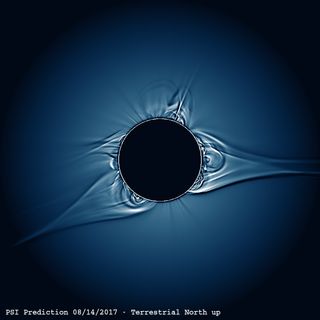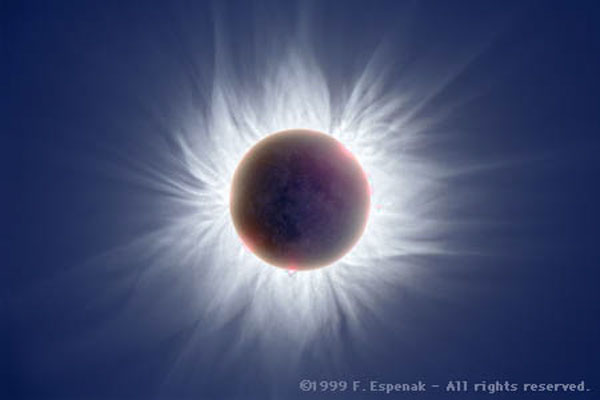

To identify a mechanism from an observation. You should keep your feeble skills in changing light bulbs and let the real scientists do what they are best at.
#The sun corona expansion zip
One thing where there is no doubt from actual observation (proved time and time again), that fools like you and your elk no absolutely zip on astrophysical phenomena.Īs for “Are we sure of any mechanism which is the cause of any astrophysical jet?” Well one things for sure, your flawed explanations by a bunch of mere electricians playing with voltage is far away from the reductionism of real science like astrophysics.įrankly. It is the fundamental and great falsehood shrouded in deliberate lies and deceit that is most offensive here - to the extent that the idiotic notions should be permanently censored. Here you implausibly consider the old stupid argument that all this is scaleable, from earth to the whole universe, when there is absolutely not one shred or piece of evidence that it is. If it is doubt you seek, much of it is already among the plasma cosmology or electric universe pseudo-science mumbo-jumbo rather than established observational data that disproves its total nonsense. This research appears in the 07 January issue of Science. Researchers hope this will reveal more about the spicule heating and launch mechanisms. IRIS will provide high-fidelity data on the complex processes and enormous contrasts of density, temperature, and magnetic field between the photosphere and corona. Another NASA mission, the Interface Region Imaging Spectrograph (IRIS), is scheduled for launch in 2012. The research team says that the majority of the plasma is heated to temperatures between 0.02 and 0.1 million Kelvin, while a small fraction is heated to temperatures above one million Kelvin.Ī key step in learning more about the Sun, according to De Pontieu, will be to better understand the interface region between the Sun’s visible surface, or photosphere, and its corona. The spicules are accelerated upward into the solar corona in fountain-like jets at speeds of approximately 31 to 62 miles per second (50 to 100 kilometers per second). “Our observations reveal, for the first time, the one-to-one connection between plasma that is heated to millions of degrees kelvin and the spicules that insert this plasma into the corona.” “The high spatial and temporal resolution of the newer instruments was crucial in revealing this previously hidden coronal mass supply,” said Scott McIntosh, a solar physicist at NCAR’s High Altitude Observatory. The rapid disappearance of these jets suggested that the plasma they carried might get very hot, but direct observational evidence of this process was missing.Įnter SDO and its Atmospheric Imaging Assembly instrument which launched in February 2010, along with NASA’s Focal Plane Package for the Solar Optical Telescope (SOT) on the Japanese Hinode satellite. These “Type II” spicules shoot upward at high speeds, often in excess of 60 miles per second (100 kilometers per second), before disappearing. Credit: NASAīut In 2007, De Pontieu and a group of researchers identified a new class of spicules that moved much faster and were shorter lived than the traditional spicules. Solar spicules as imaged by NASA's Solar Dynamics Observatory. Over the years, experts have proposed a variety of theories, and as De Pontieu said, the spicule theory had been dismissed when it was found spicule plasma did not reach coronal temperatures.

And, he said, you’d want to know why it appears the solar atmosphere is breaking all kinds of thermodynamic laws. Solar physicst and former Universe Today writer Ian O’Neill (and current Discovery Space producer, and of Astroengine fame) compared the anomaly of the Sun’s atmosphere being hotter than the surface to if the air surrounding a light bulb was a couple of magnitudes hotter than the bulb’s surface.


“Heating of spicules to millions of degrees has never been directly observed, so their role in coronal heating had been dismissed as unlikely,” says Bart De Pontieu, the lead author and a solar physicist at LMSAL. But a good look with new “eyes” reveals a new kind of spicule that moves energy from the Sun’s interior to create its hot outer atmosphere. The existence of these small, narrow jets of plasma, called spicules has long been known, but they had never been directly studied before and were thought to be too cool to have any appreciable heating effect. But now, using the combined visual powers of NASA’s Solar Dynamics Observatory and Japan’s Hinode satellite, scientists have made direct observations of jets of plasma shooting off the Sun’s surface, heating the corona to millions of degrees. For years researchers have known – and wondered why – the Sun’s outer atmosphere, or corona, is considerably hotter than its surface. The mystery of the Sun’s corona may finally be solved.


 0 kommentar(er)
0 kommentar(er)
